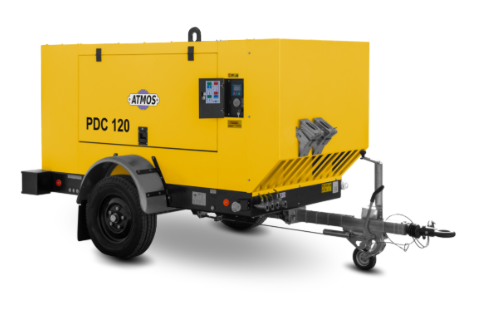What Compressor Do I Need? Choosing the Right Air Compressor for Your Application
When it comes to powering tools, machinery, or production lines, choosing the right air compressor can be overwhelming. With so many models, sizes, and technologies available, it’s important to match your compressor to your specific requirements.
Whether you’re running a workshop, factory, or construction site, selecting the right compressor ensures efficiency, reliability, and cost savings. In this guide, we’ll break down how to choose the right compressor based on application, demand, and environment.
Step 1: Understand Your Application
Different jobs require different amounts of compressed air. Start by asking yourself:
- What will I use the compressor for?
- Powering small pneumatic tools (nail guns, paint sprayers, impact wrenches)
- Industrial applications (production lines, packaging, food processing, automotive plants)
- Heavy-duty continuous operations (textiles, mining, oil & gas, electronics manufacturing)
👉 Rule of Thumb: The more critical and continuous your compressed air demand, the more robust your compressor should be.
Step 2: Check Airflow (CFM) and Pressure (PSI) Requirements
The two most important specifications are:
- CFM (Cubic Feet per Minute): Measures airflow. High-CFM compressors can power multiple tools or machines simultaneously.
- PSI (Pounds per Square Inch): Measures pressure. Each tool or machine requires a minimum PSI to operate efficiently.
📌 Example:
- Small workshop → 2–10 CFM at 90 PSI may be enough.
- Industrial plant → 200+ CFM at higher PSI is often required.
Always size your compressor slightly above your highest demand to avoid overloading.
Step 3: Decide Between Piston and Screw Compressors
Piston (Reciprocating) Compressors
- Best for: Small shops, garages, and low-duty applications.
- Pros: Lower upfront cost, simple design.
- Cons: Noisy, more maintenance, less efficient for continuous use.
Rotary Screw Compressors
- Best for: Industrial plants and continuous-duty applications.
- Pros: Quiet operation, energy efficient, reliable for 24/7 use.
- Cons: Higher upfront investment, but lower total cost of ownership.
Step 4: Fixed Speed vs Variable Speed Drive (VSD)
- Fixed Speed Compressors – Run at one constant speed. Ideal for steady, predictable air demand.
- Variable Speed Screw Compressors (VSD) – Adjust motor speed based on demand, saving 30–50% in energy costs. Perfect for operations with fluctuating air requirements.
Step 5: Consider the Environment
- Dusty or humid areas → You’ll need strong filtration and dryers.
- Hot environments → Cooling systems are critical to prevent overheating.
- Clean applications (food, pharma, electronics) → Oil-free compressors are often required to prevent contamination.
Step 6: Look at Total Cost of Ownership
Buying an air compressor isn’t just about the initial cost—it’s about long-term efficiency.
- Energy costs account for 70%+ of a compressor’s lifetime expense.
- A slightly more expensive, energy-efficient compressor will save thousands in electricity bills over its life.
Quick Selection Guide
|
Application Type |
Recommended Compressor |
Why It Works Best |
|
Home workshop / DIY |
Small portable piston compressor |
Affordable, compact, simple tools |
|
Automotive garage |
5–15 HP piston or small screw |
Handles air tools efficiently |
|
Medium factory |
15–50 HP rotary screw compressor |
Reliable for continuous use |
|
Large industrial plant |
50–500+ HP screw (VSD preferred) |
Energy savings, 24/7 reliability |
|
Clean industries (pharma, food) |
Oil-free rotary screw compressor |
No risk of contamination |
- https://aal.ae/air-compressor-suppliers-in-uae
- https://aal.ae/ps/compressor-suppliers-dubai
- https://aal.ae/ps/ac-compressor-suppliers-in-uae
- https://aal.ae/ps/air-compressor-spare-parts-suppliers-in-uae
- https://aal.ae/compressor-manufacturers-in-uae
- https://aal.ae/ps/air-compressor
- https://aal.ae/ps/air-compressor-spare-parts-suppliers-uae
- https://aal.ae/ps/air-compressor-dealers-in-dubai
- https://aal.ae/air-compressor-for-fibre-optic-cable-blowing
- https://aal.ae/cofb/air-compressor-for-fibre-optic-cable%20blowing.php
- https://aal.ae/automatic-air-compressor
- https://aal.ae/ccw/automatic-air-compressor#about
- https://aal.ae/air-compressor-dealer-in-uae

